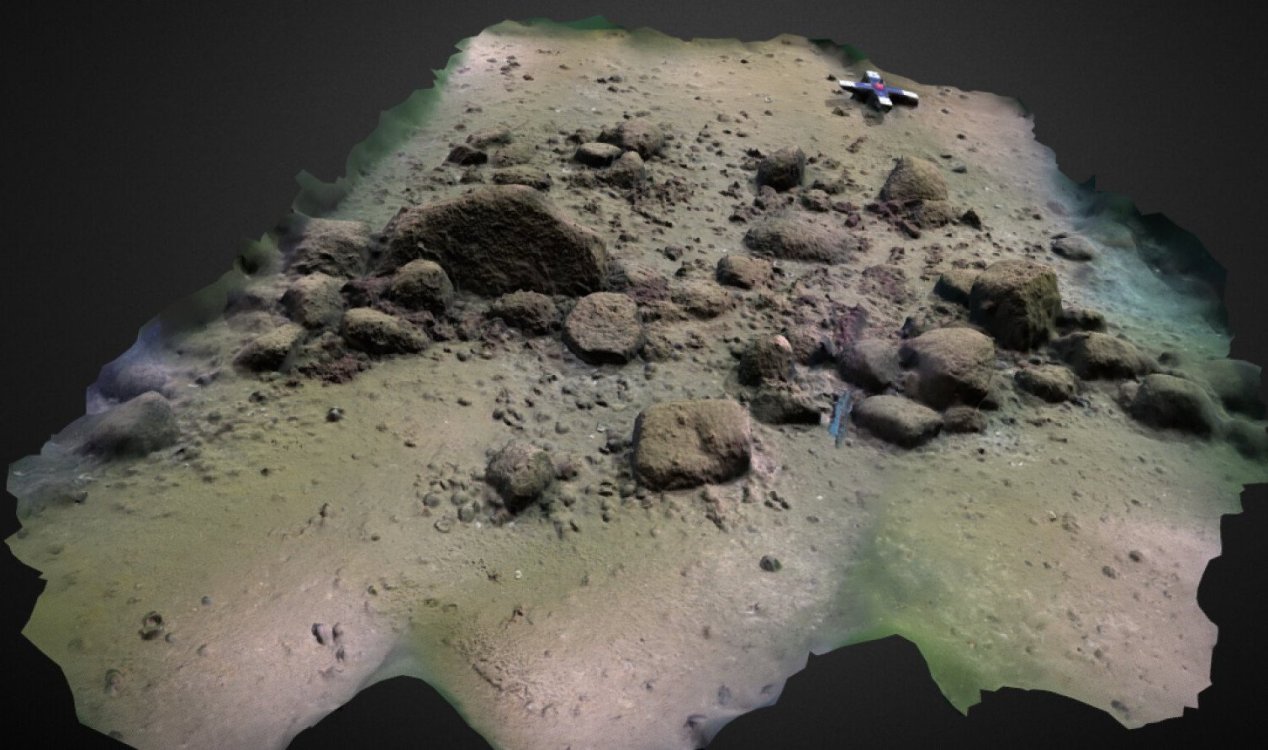Archaeology & History
February 13, 2024 · 17 comments
17 comments

Some of the stones that made up the Blinkerwall. Image Credit: Philipp Hoy
Known as the Blinkerwall, it was thought to have been built 10,000 years ago at a time before its location in the Bay of Mecklenburg had been swallowed up by rising sea levels.
The region - known as Doggerland - was flooded around 8,2000 years ago.
According to archaeologists, the wall was likely built by hunter-gatherers as a way to redirect reindeer herds into a dead end so that they could easily be picked off.
"When you chase the animals, they follow these structures, they don't attempt to jump over them," said Jacob Geersen of the Leibniz Institute for Baltic Sea Research.
"The idea would be to create an artificial bottleneck with a second wall or with the lake shore."
So far a second wall has yet to be found, although it may still remain buried beneath the sediment.
Either way, researchers remain certain the Blinkerwall is not a natural formation.
"This puts the Blinkerwall into range of the oldest known examples of hunting architecture in the world and potentially makes it the oldest man-made megastructure in Europe," they wrote.
Source: The Guardian | Comments (17)
Gigantic 1km-long megastructure discovered beneath the Baltic Sea
By T.K. RandallFebruary 13, 2024 ·
 17 comments
17 comments
Some of the stones that made up the Blinkerwall. Image Credit: Philipp Hoy
The huge structure could potentially be the oldest Stone Age megastructure built by humans in Europe.
Situated 21 meters beneath the surface of the Baltic, this previously undiscovered megastructure measures around 1km in length and is constructed from 1,673 individual stones.Known as the Blinkerwall, it was thought to have been built 10,000 years ago at a time before its location in the Bay of Mecklenburg had been swallowed up by rising sea levels.
The region - known as Doggerland - was flooded around 8,2000 years ago.
According to archaeologists, the wall was likely built by hunter-gatherers as a way to redirect reindeer herds into a dead end so that they could easily be picked off.
"The idea would be to create an artificial bottleneck with a second wall or with the lake shore."
So far a second wall has yet to be found, although it may still remain buried beneath the sediment.
Either way, researchers remain certain the Blinkerwall is not a natural formation.
"This puts the Blinkerwall into range of the oldest known examples of hunting architecture in the world and potentially makes it the oldest man-made megastructure in Europe," they wrote.
Source: The Guardian | Comments (17)

The Unexplained Mysteries
Book of Weird News
AVAILABLE NOW
Take a walk on the weird side with this compilation of some of the weirdest stories ever to grace the pages of a newspaper.
Click here to learn more

Support us on Patreon
BONUS CONTENTFor less than the cost of a cup of coffee, you can gain access to a wide range of exclusive perks including our popular 'Lost Ghost Stories' series.
Click here to learn more
United States and the Americas
UK and Europe
Israel, Palestine and the Middle-East
Spirituality, Religion and Beliefs
Total Posts: 7,774,291 Topics: 325,318 Members: 203,836
Not a member yet ? Click here to join - registration is free and only takes a moment!
Not a member yet ? Click here to join - registration is free and only takes a moment!































Please Login or Register to post a comment.